Up Close: Cartier Santos-Dumont XL Hand-Wind
Back in fine form.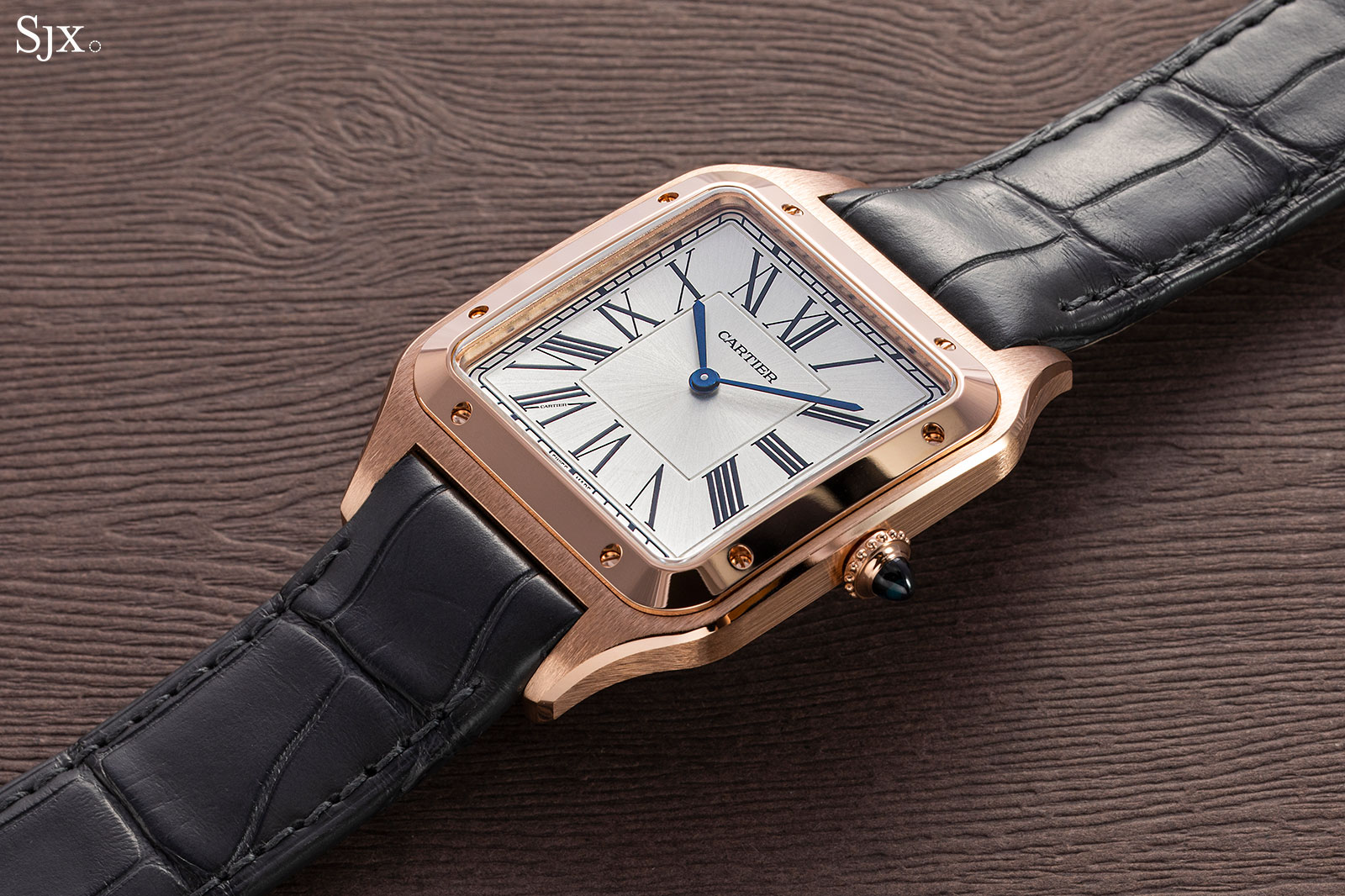
Though Cartier has a huge range of watch case styles, many are iterations from a handful of original designs that were usually created in the early 20th century. Only a handful stick closely to the design of the vintage originals, most notably the Tank Cintree and Crash, and now the new Santos-Dumont XL, newly launched at Watches & Wonders 2020.
Originally (re)launched in last year in two sizes – both with quartz movements only – the Santos-Dumont is now available with a hand-wind, mechanical movement in a larger, but not too large, case. The elegant design that channels the spirit of the vintage original remains, with only the dimensions and movement changed.
And the new hand-wind Santos Dumont XL is also well priced enough that it would be a value proposition in more ordinary times. Not only is the new model available in steel, which was absent before, the 18k gold version is almost 30% cheaper than the equivalent from the earlier generation.
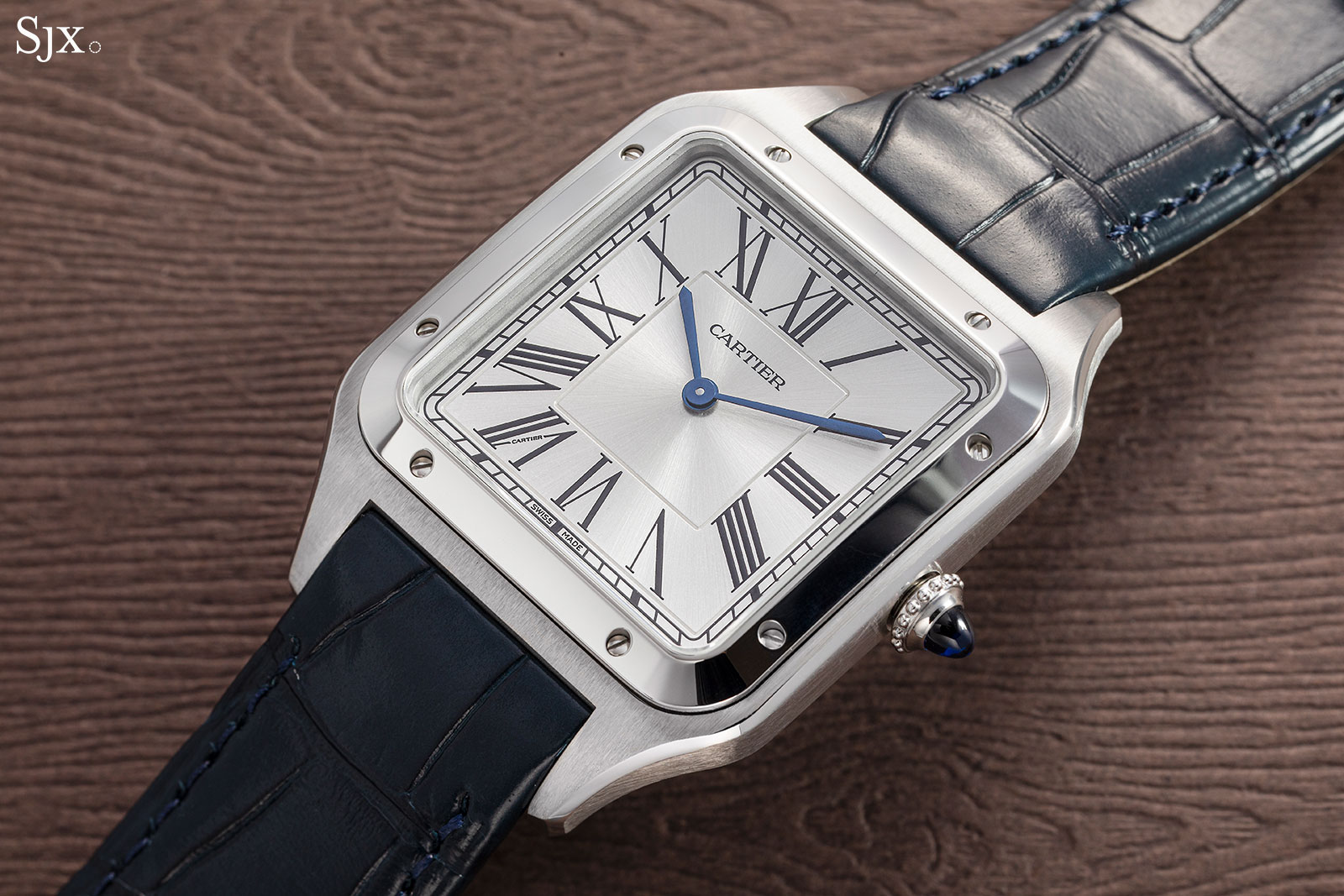
The Santos-Dumont XL in steel
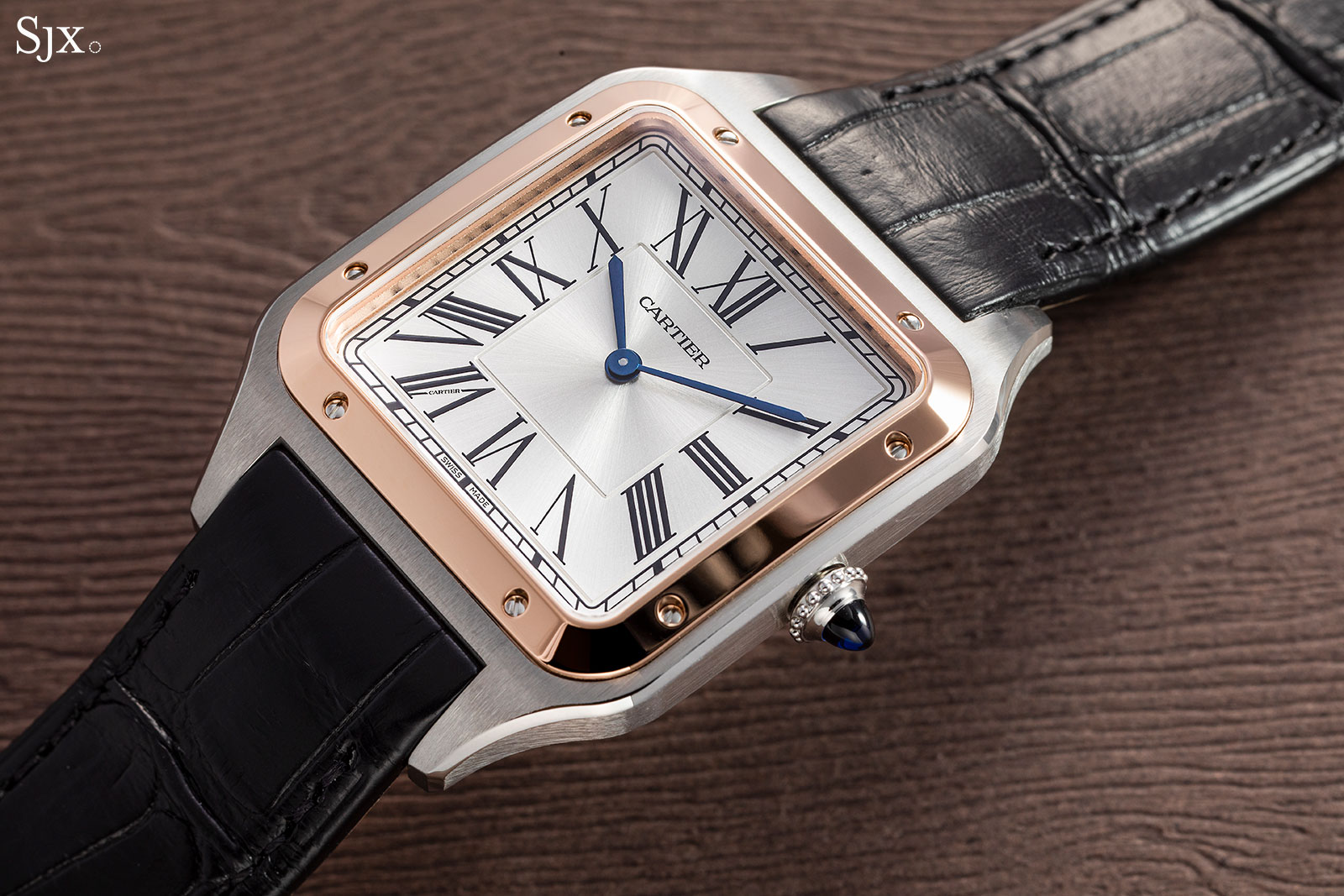
And in two-tone steel and 18k pink gold, which is a very 1980s look
Since 1904…
The watch gets its name from Alberto Santos-Dumont, a Brazilian inventor and aviator who spent his adult life in Paris. A minor celebrity in France for exploits in planes and airships, Santos-Dumont was a larger than life character: in the family history recently published by Francesca Cartier Brickell, The Cartiers: The Untold Story of the Family Behind the Jewelry Empire, Santos-Dumont is described as travelling between restaurant and nightclub in a light airship that “resembled a rugby ball on its side”.
Having become friends with Louis Cartier – one of the three brothers who ran the jeweller then – though the Parisian aviators’ club, Santos-Dumont reputedly complained to Louis about the inconvenience of reading the time on a pocket watch while flying.
And several weeks later, according to Ms Cartier Brickell, the first wristwatch designed for men was delivered to Santos-Dumont in 1904. The aviator’s wristwatch became popular amongst the fashionable set in Paris, and Louis made several more, albeit discreetly. It wasn’t till 1911 that the watch was launched publicly – and named the Santos.
The watch was produced in several versions in the following years, but only really became a massive hit when the Santos de Cartier was launched in 1978. Part of the low-priced Les Must de Cartier line of watches and accessories that bankrolled the modern Cartier company, the Santos de Cartier became an “It” watch of the 1980s and even Gordon Gekko was wearing one in Wall Street.
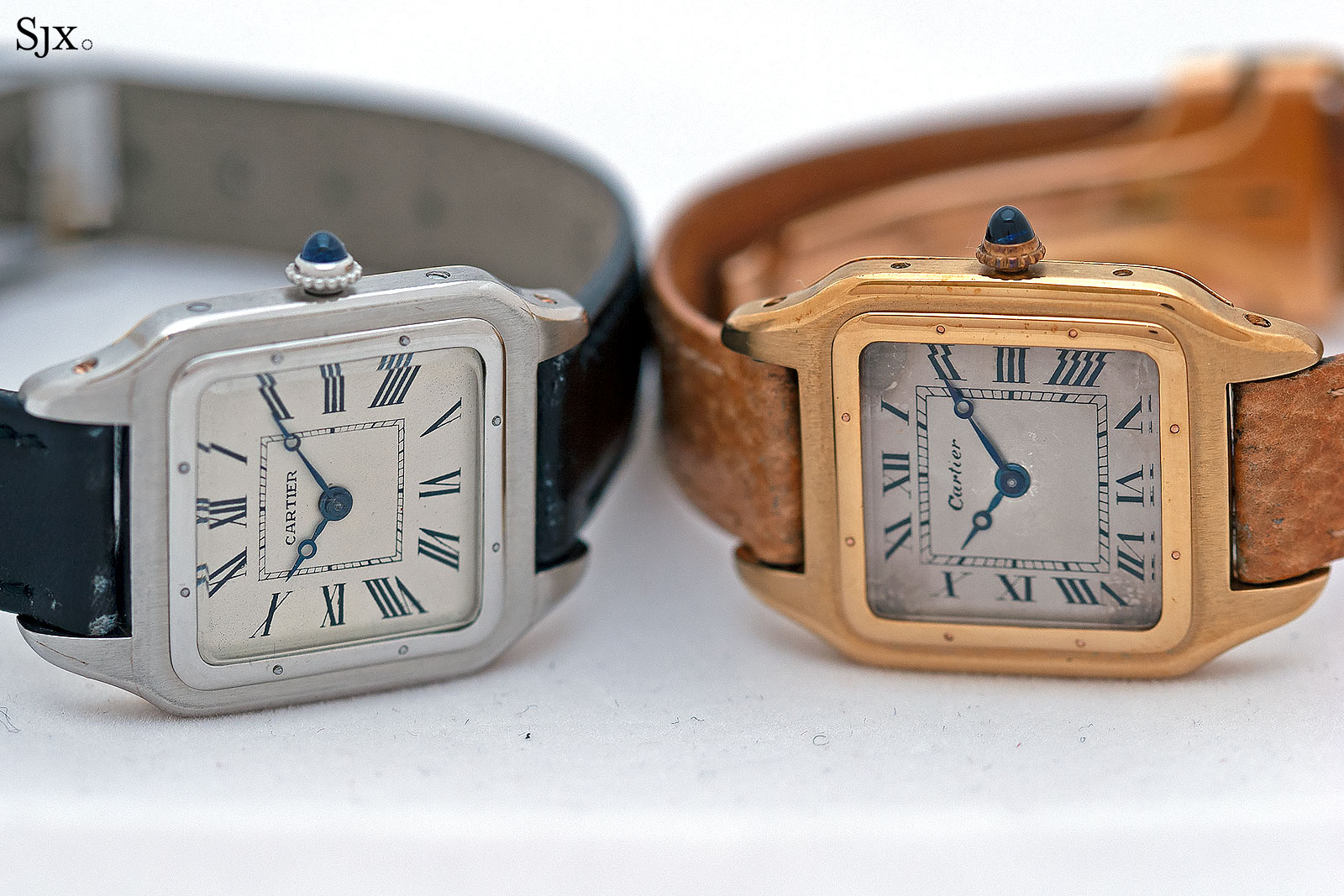
A pair of vintage Santos watches from about 1920, both part of the Cartier Collection
It was followed in subsequent decades by the Santos Galbée, Santos 100, and the Santos de Cartier of 2018. But a closer ancestor of the Santos-Dumont XL is the extra-thin Santos ref. 1575 of the 1990s (which joined the CPCP Collection Privee Cartier Paris in 2008) that has been labelled a Santos-Dumont retroactively but was not officially described as such at the time.
But the immediate predecessor to today’s Santos-Dumont XL was the watch of the same name launched in 2005 (as the ref. W2006951 in pink gold). Though it was minimalist and did away with the signature bezel secured by screws, the 2005 model nonetheless looked like a Santos because of its case shape and dial.
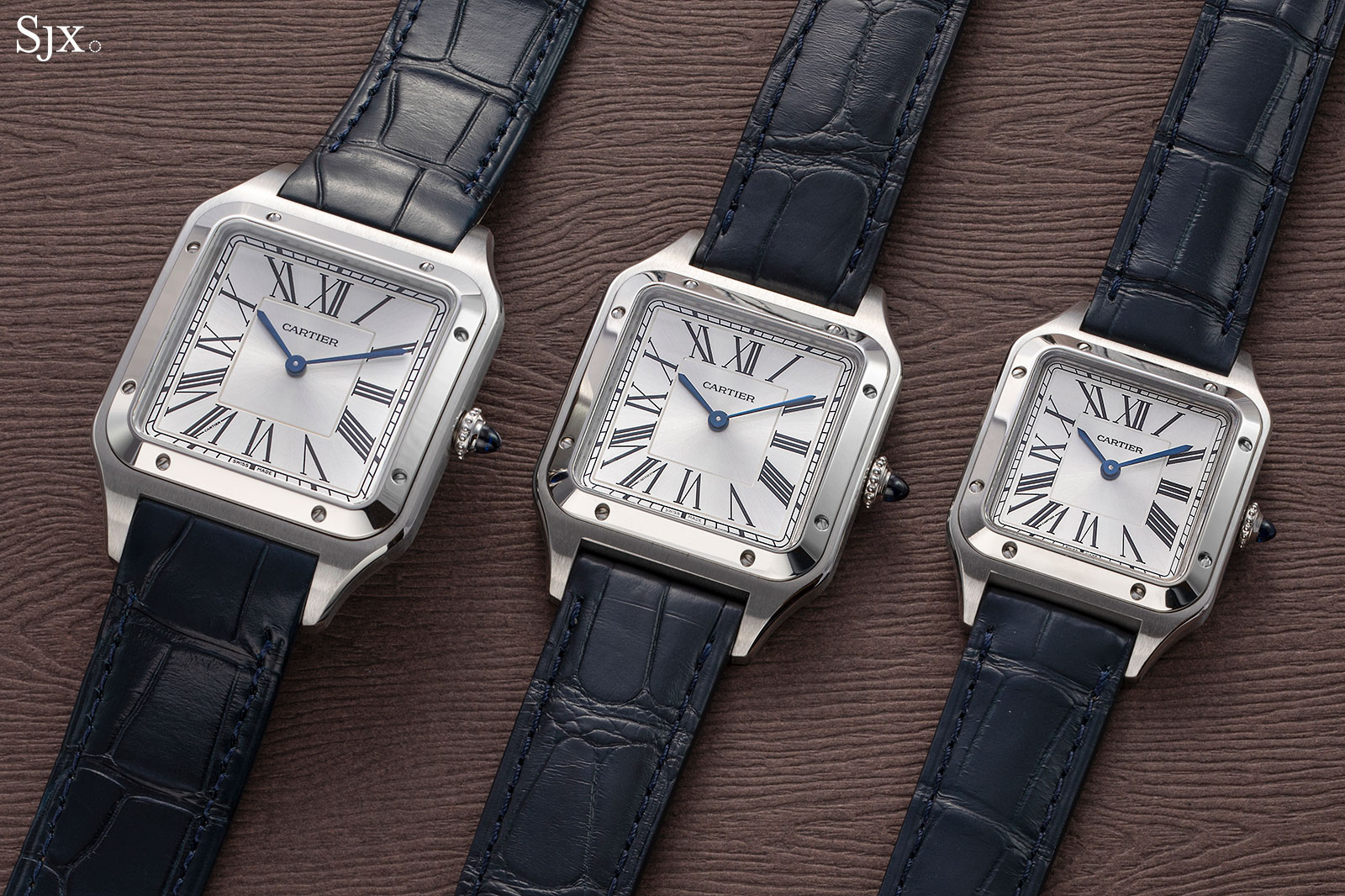
From left: Santos-Dumont XL, large model, and small model
New and improved
The latest Santos-Dumont XL is very much a faithful take on the original, combining the best bits of various Santos models from the recent past, namely the ref. 1575 (which was too small) and the 2005 model (which had no bezel). It transplants the case silhouette and bezel of the ref. 1575 onto the size and profile of the 2005 Santos-Dumont, creating a graceful timepiece with detail and depth that is rare in a plain, flat watch.
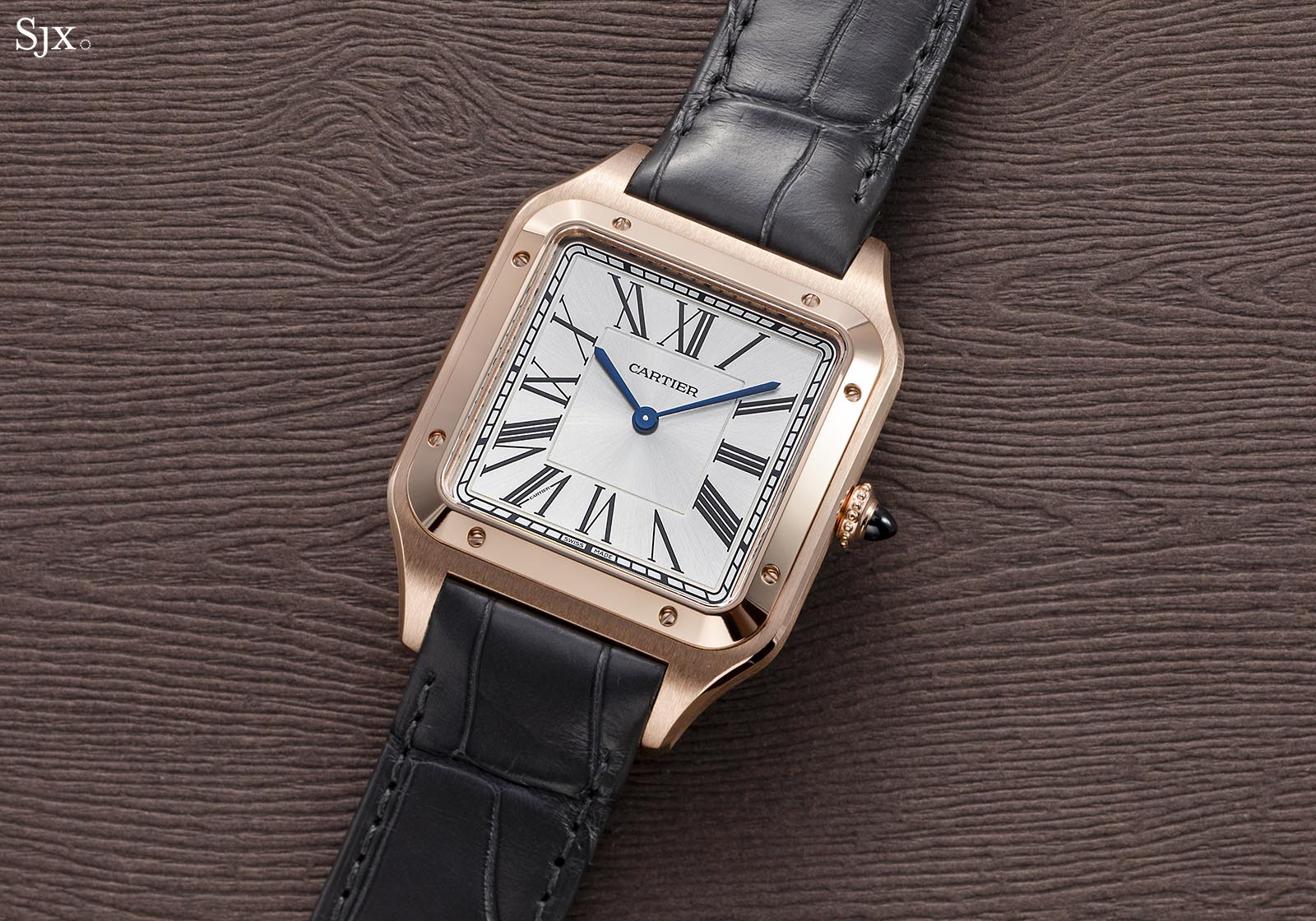
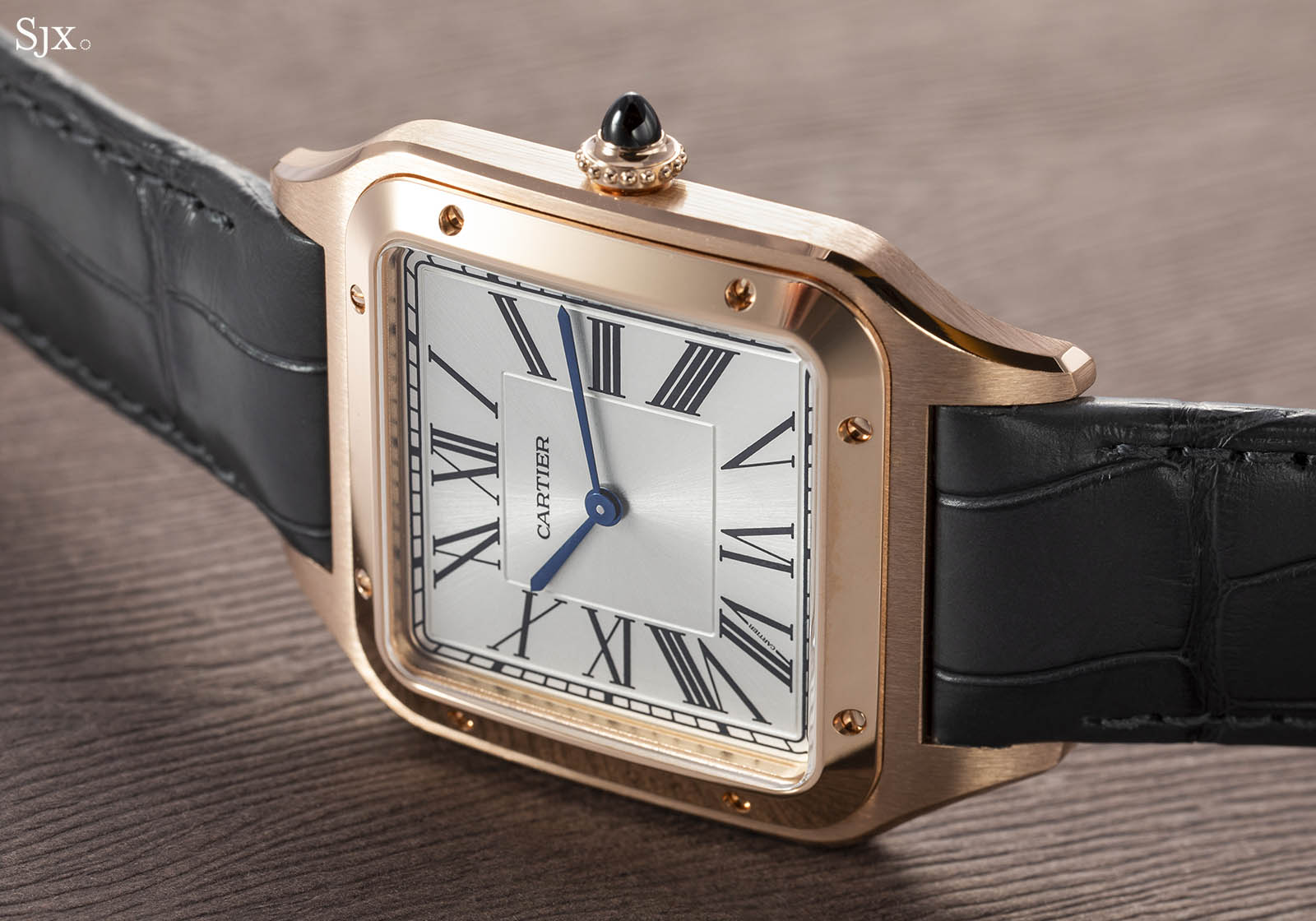
Despite the “XL” label, the case measures 46.6 mm by 33.9 mm, and just 7.5 mm high. Large enough to be practical as an everyday watch, even with casual wear, the case has large-but-flat proportions that give it an elegant profile on the wrist.
Even though it is largish by dress watch standards, the simple dial and clean lines of the case mean it can perform the job of a formal-dress watch perfectly.
Though the case seems slightly curved when on the wrist, it is actually flat, but the create the illusion of a curved case while also ensuring good ergonomics. The slightly domed case back – which reduces the thickness of the case middle – also enhances the feeling of a flat, curved watch. And it helps that the watch is lightweight, even in gold.
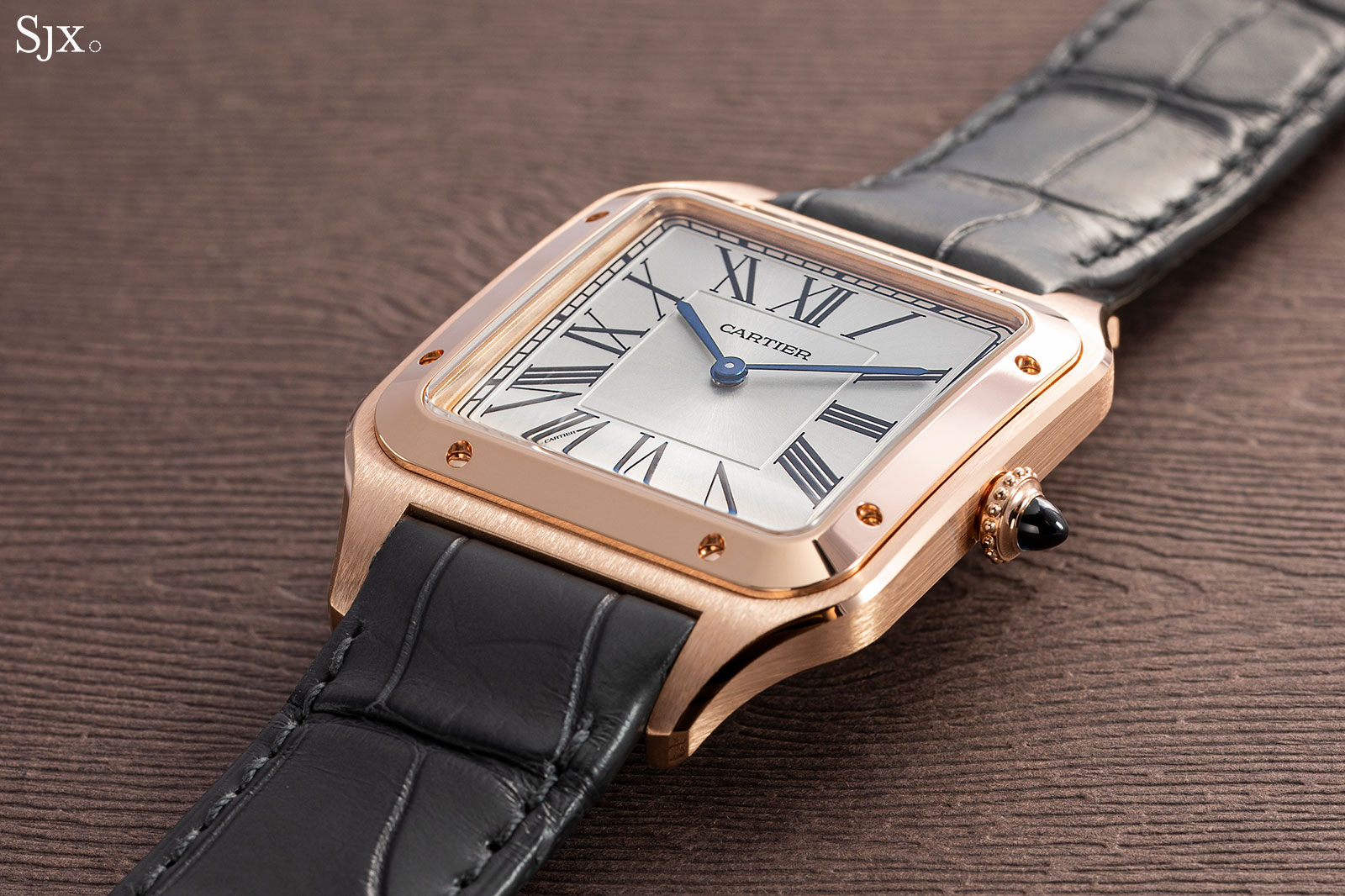
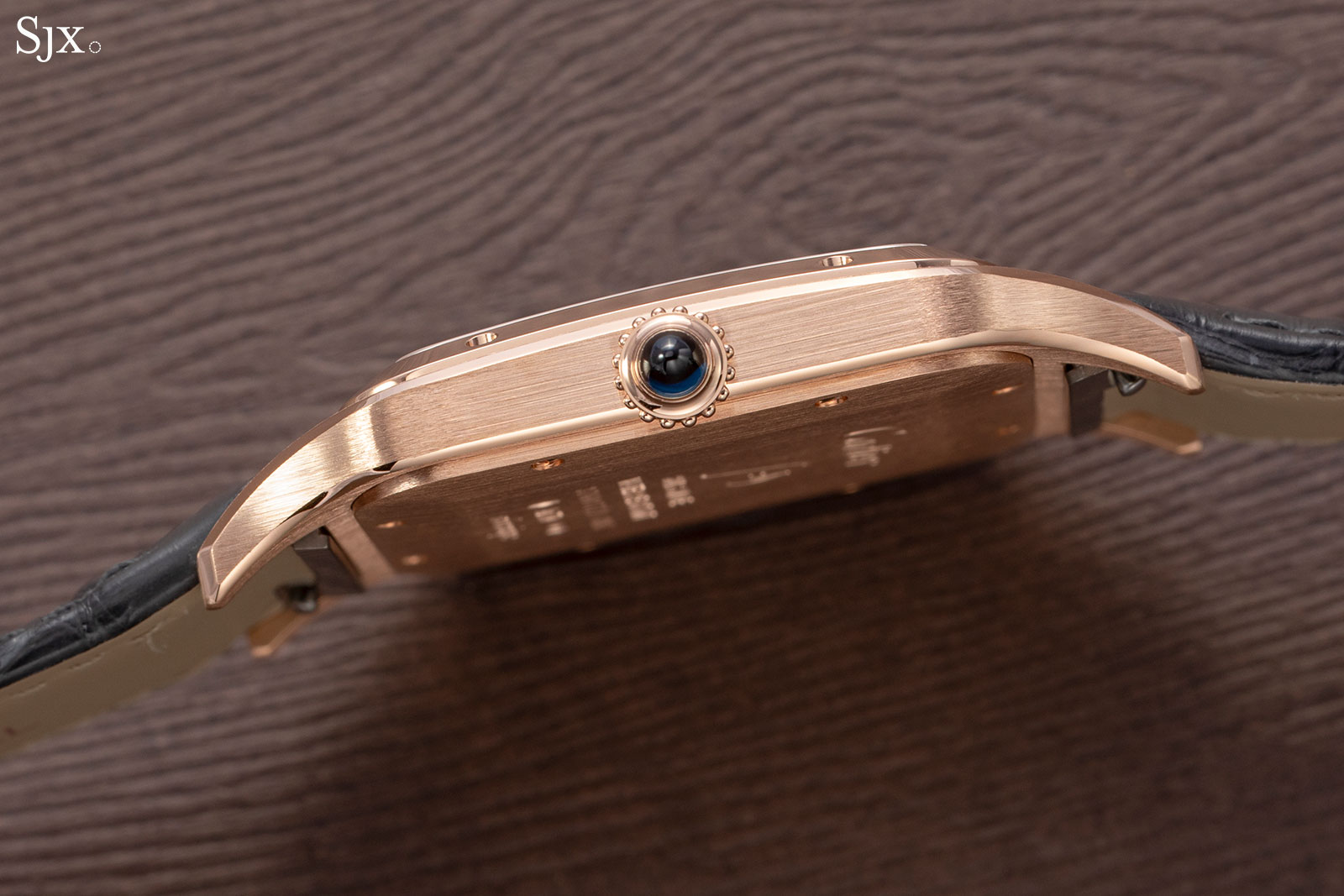
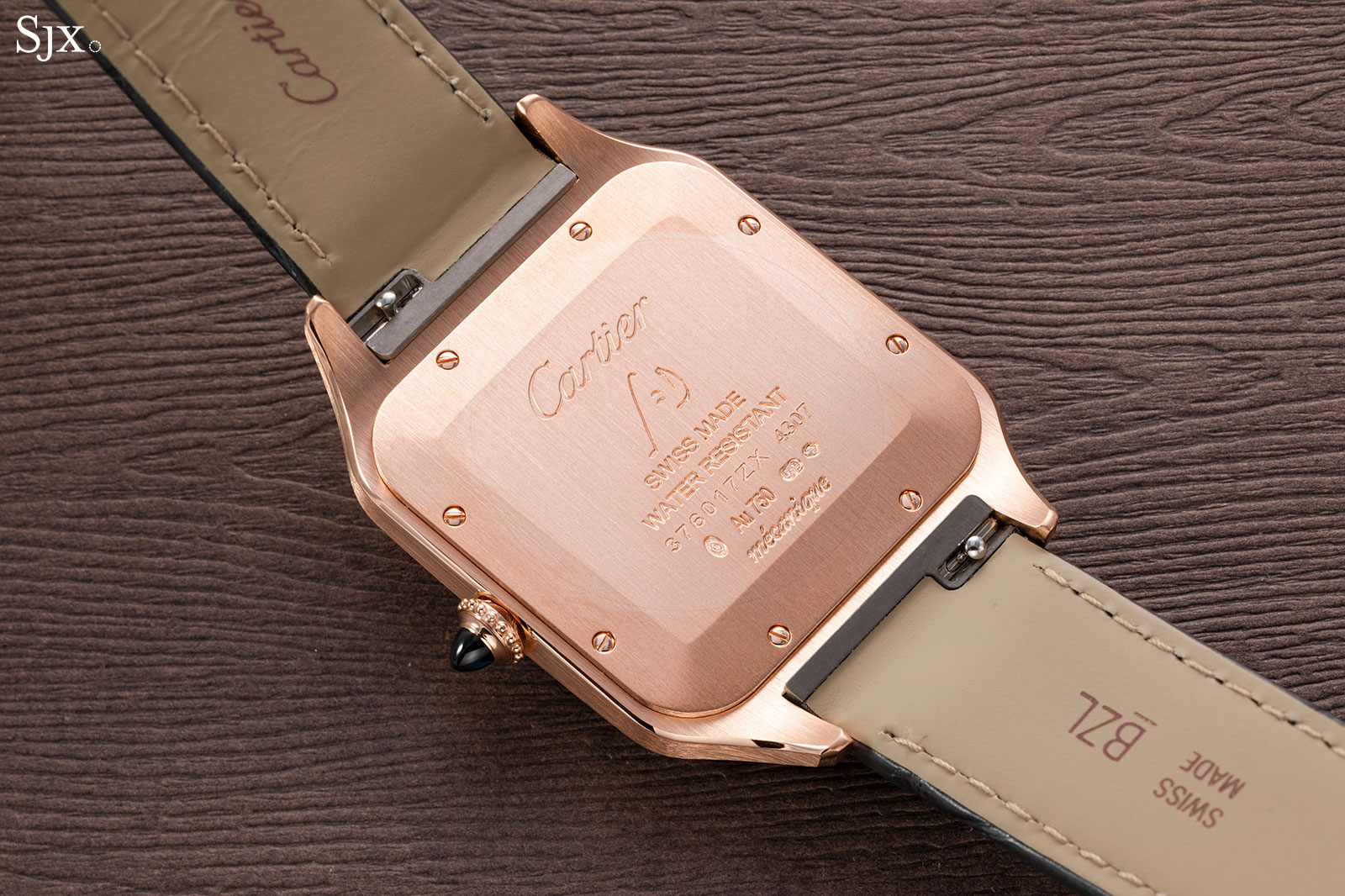
Even though the case is simple, it has excellent detailing that gives it visual depth. Instead of being flat, the bezel is slightly sloped, with deeply recessed screws. And the dial also sits fairly far below the bezel. Add to the that the curved lugs, and the result is a properly put-together design that is flat but not flattened.
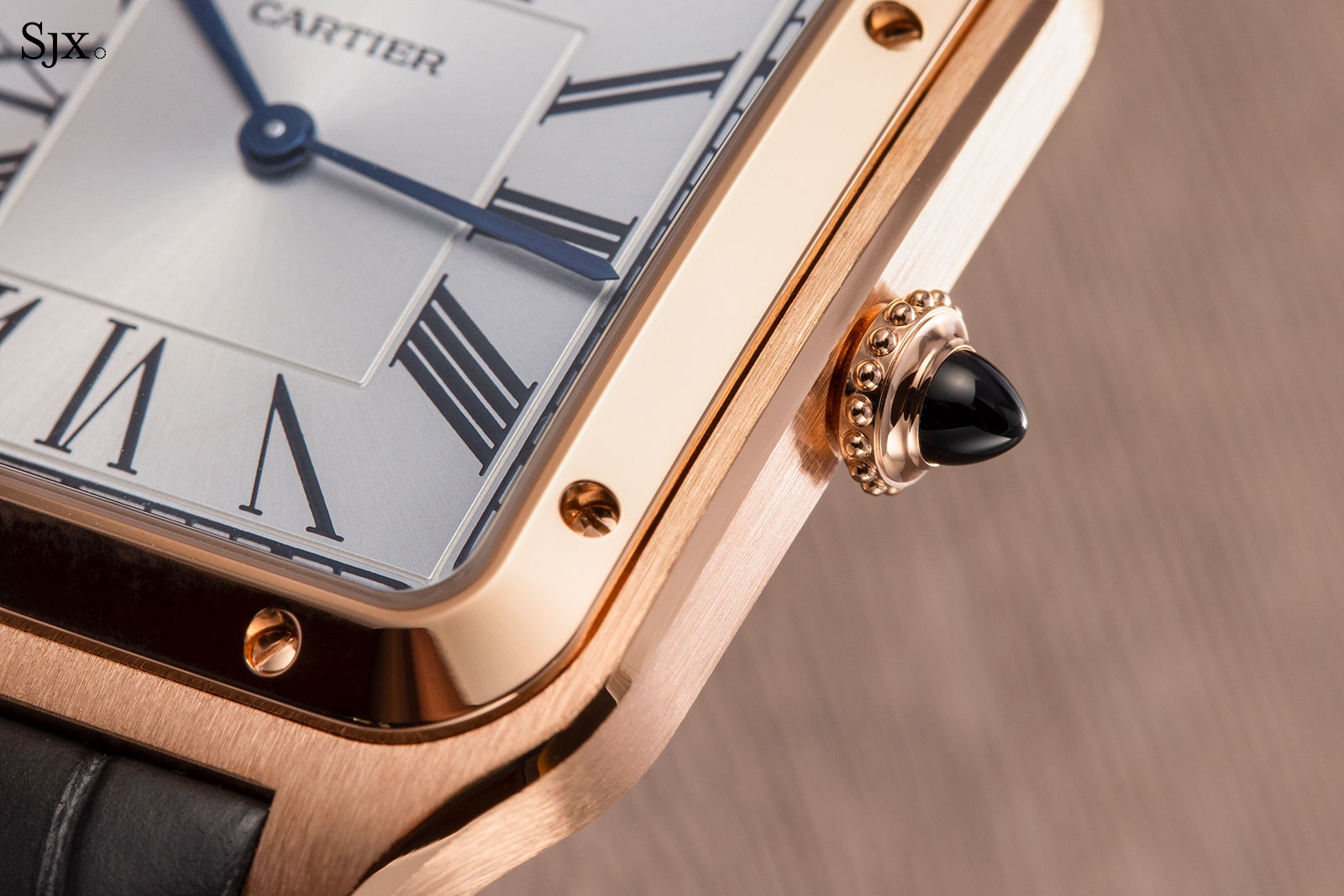
The case finishing is also excellent. It’s done in the same style as found on the Santos models, including the current generation, which means a linear brushing on all flat surfaces, with the edges on the front and back finished with a wide, polished bevel.
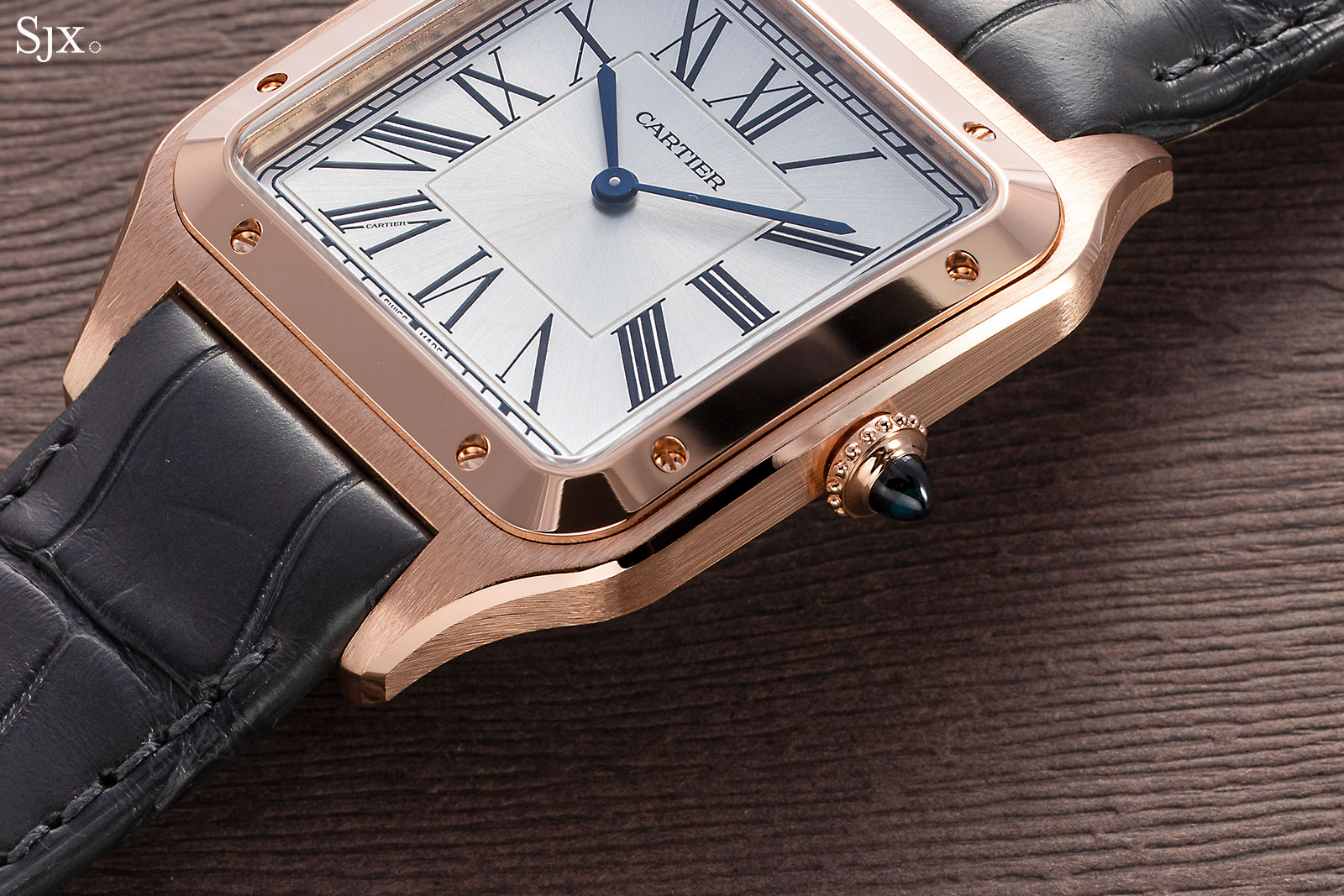
The polished bevel all around the upper edges of the case catches the light nicely, giving the case a more refined feel, something that is particularly useful on the steel and two-tone models.
Up close – very close – there is minor unevenness in the line that separates the brushed and polished surfaces, but it is negligible.
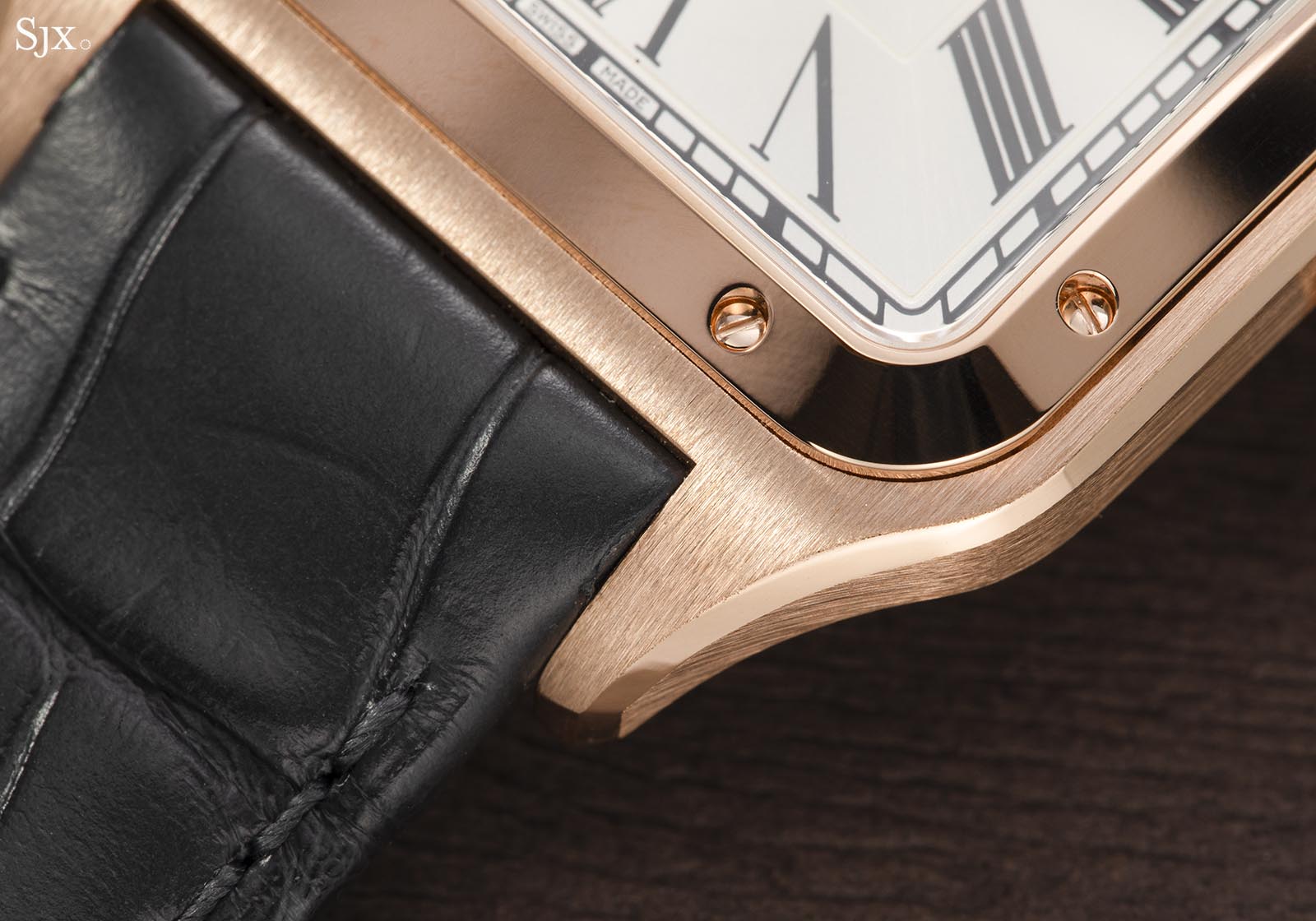
“S=D”
Hidden under the solid case back is the 430 MC movement, which is exactly the same calibre found on the previous generation Santos-Dumont. It is actually the Piaget 430P, a compact, slim movement that’s just 2.1 mm high. While not cutting edge, the movement is a solid choice for the Santos-Dumont XL.
Introduced in 1998, the 430P is a workhouse ultra-thin movement that’s now found in a variety of Piaget Altiplano watches and also used extensively by Cartier. Its size and age explains the short power reserve of 38 hours and relatively slow beat of 3 Hz, but the 430P is tried and tested, and consequently reliable.
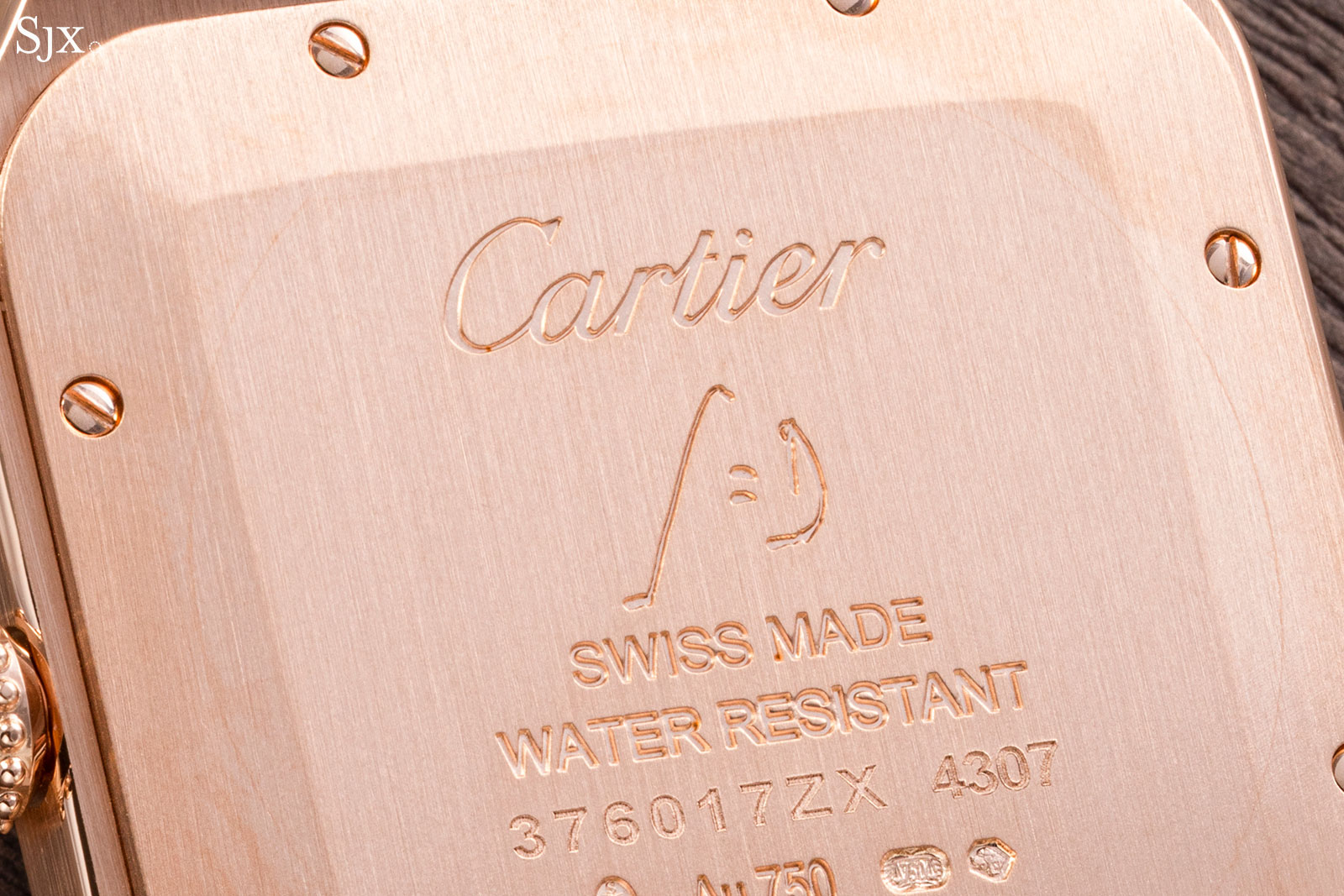
An abbreviated version of Alberto Santos-Dumont’s signature is engraved on the case back, with the distinctive “=” that he often used instead of a dash to join his two last names
Equally reliable is classic Cartier dial design. The face of the Santos-Dumont is simple and effective, but not fancy. The surface is silvered and radially brushed, with a stamped border around the centre of the dial to create a chapter ring for the hour numerals and also give it a bit of depth.
Quintessentially Cartier in style, the dial is perfect for the case style, although I would have preferred Breguet hands as found on the the vintage original. A different type of hands would also have been useful in distinguishing the mechanical Santos-Dumont from the near-identical quartz versions.
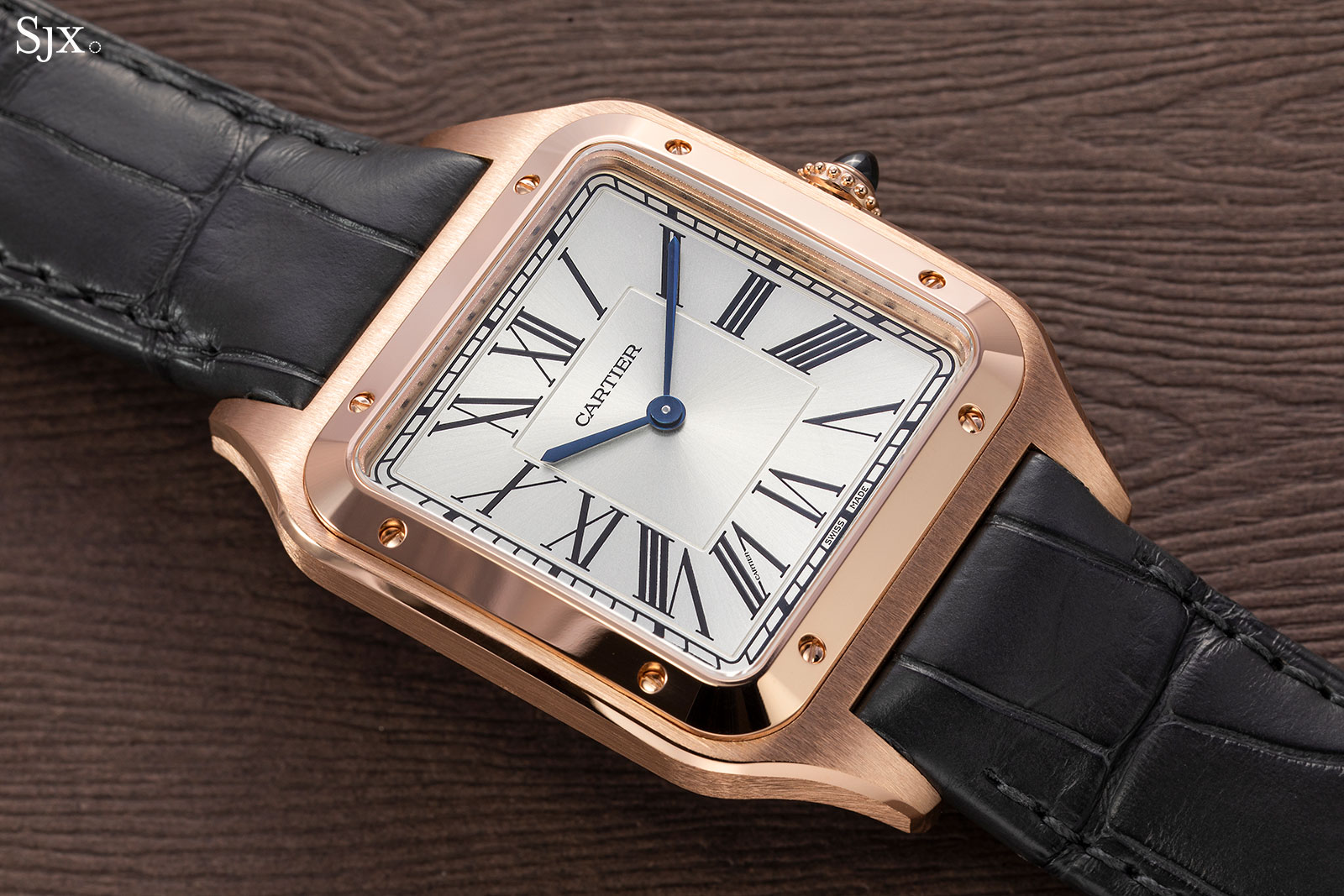
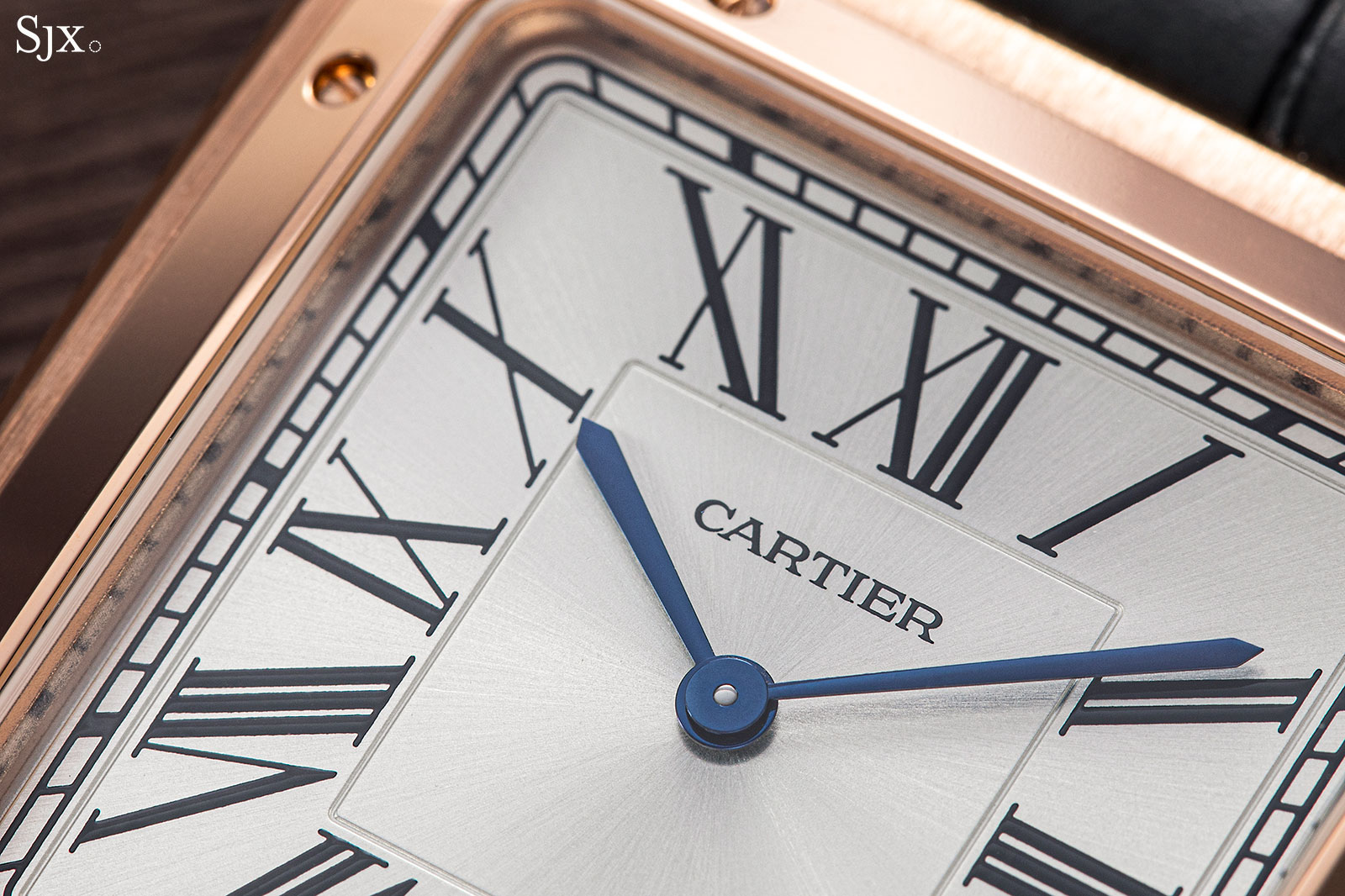
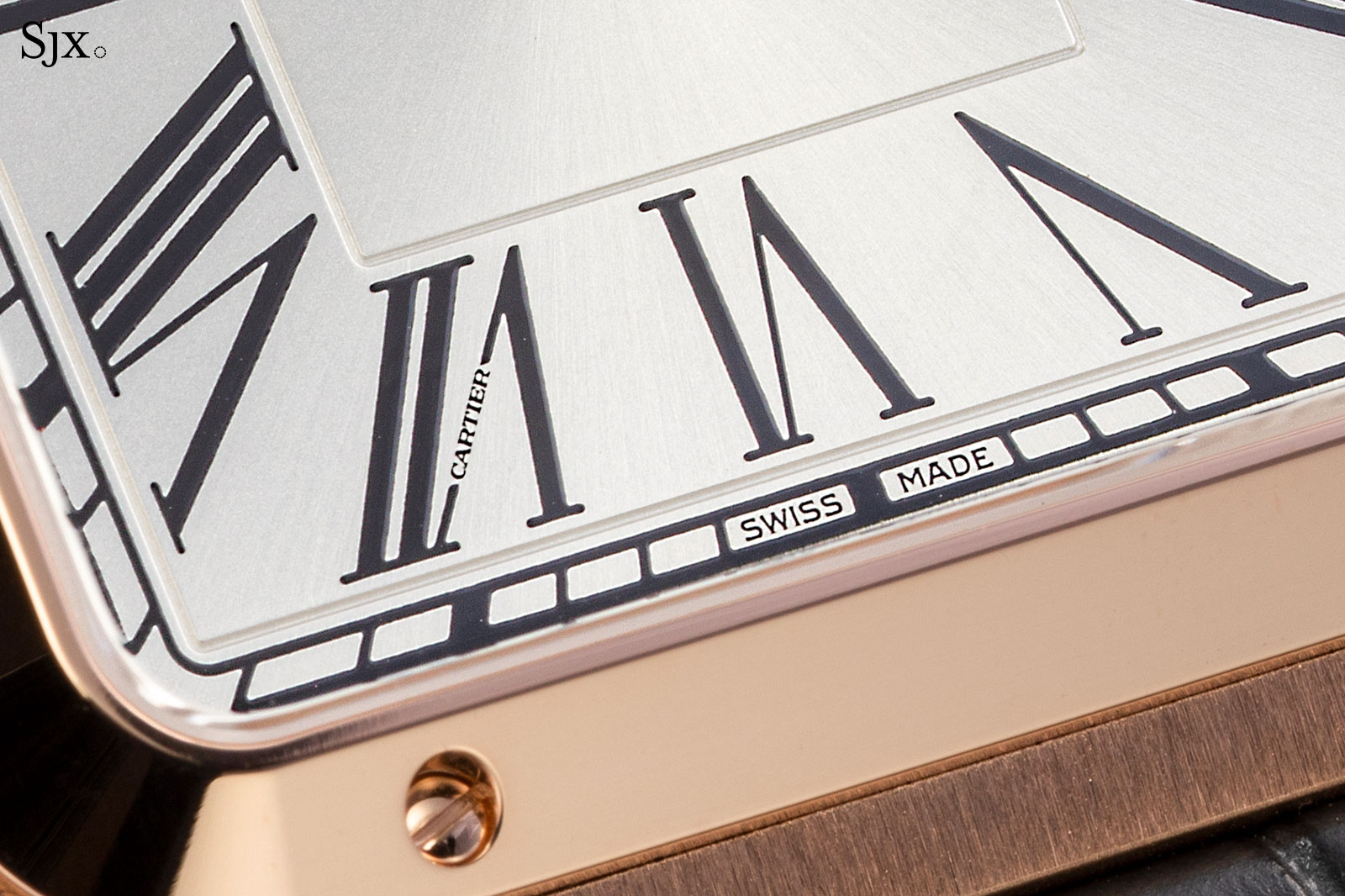
The Cartier “secret signature” integrated into the “VII” as is tradition
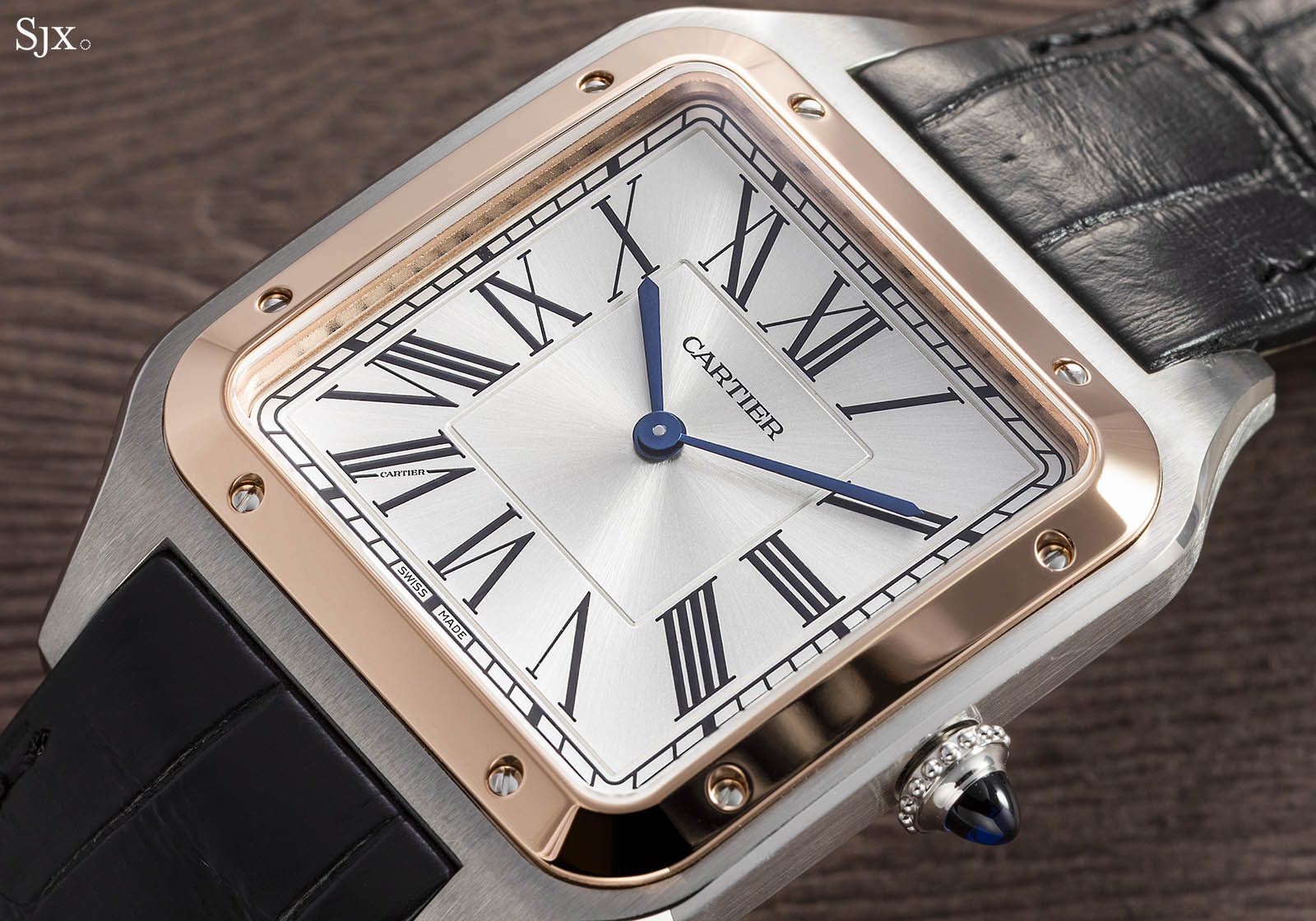
The same dial is found on the steel as well as two-tone models
Integrated strap
A functional feature that sets the mechanical model apart from its quartz counterparts is the strap. While the quartz models have standard straps, the hand-wind is delivered on a strap with metal inserts at both ends. The inserts allow the strap to sit flush with the case, while also holding the quick-release spring bars.
While the fit is good and the seamless look attractive, the proprietary strap ends mean that choices of colours and lengths for straps is limited. Fortunately, standard straps work just as well, albeit with a gap between the strap and case.
There is no bracelet available for any version of the Santos-Dumont, though it is clear that a well-designed, retro-style bracelet would work very well. That seems like a logical next step, so one can hope.
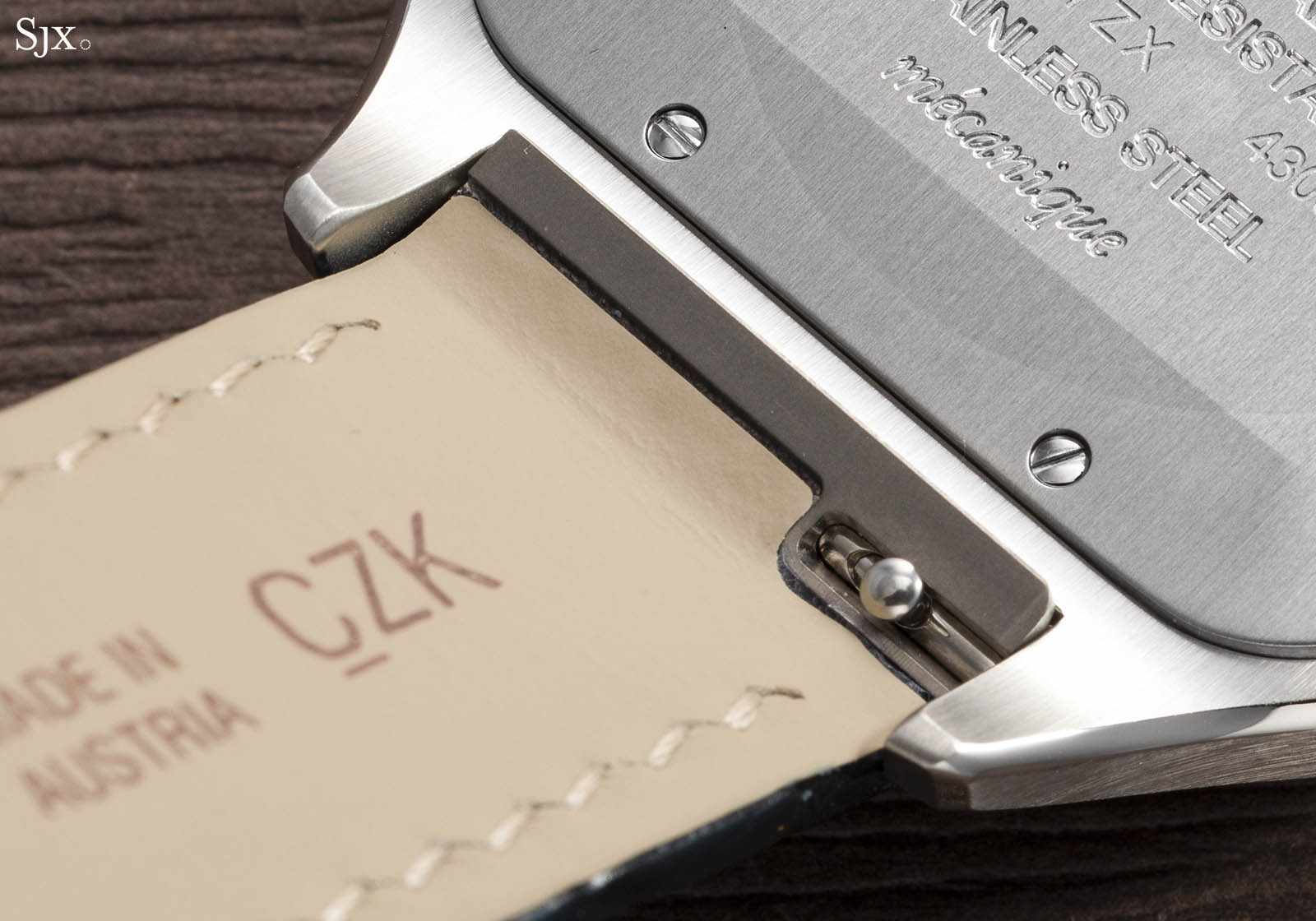
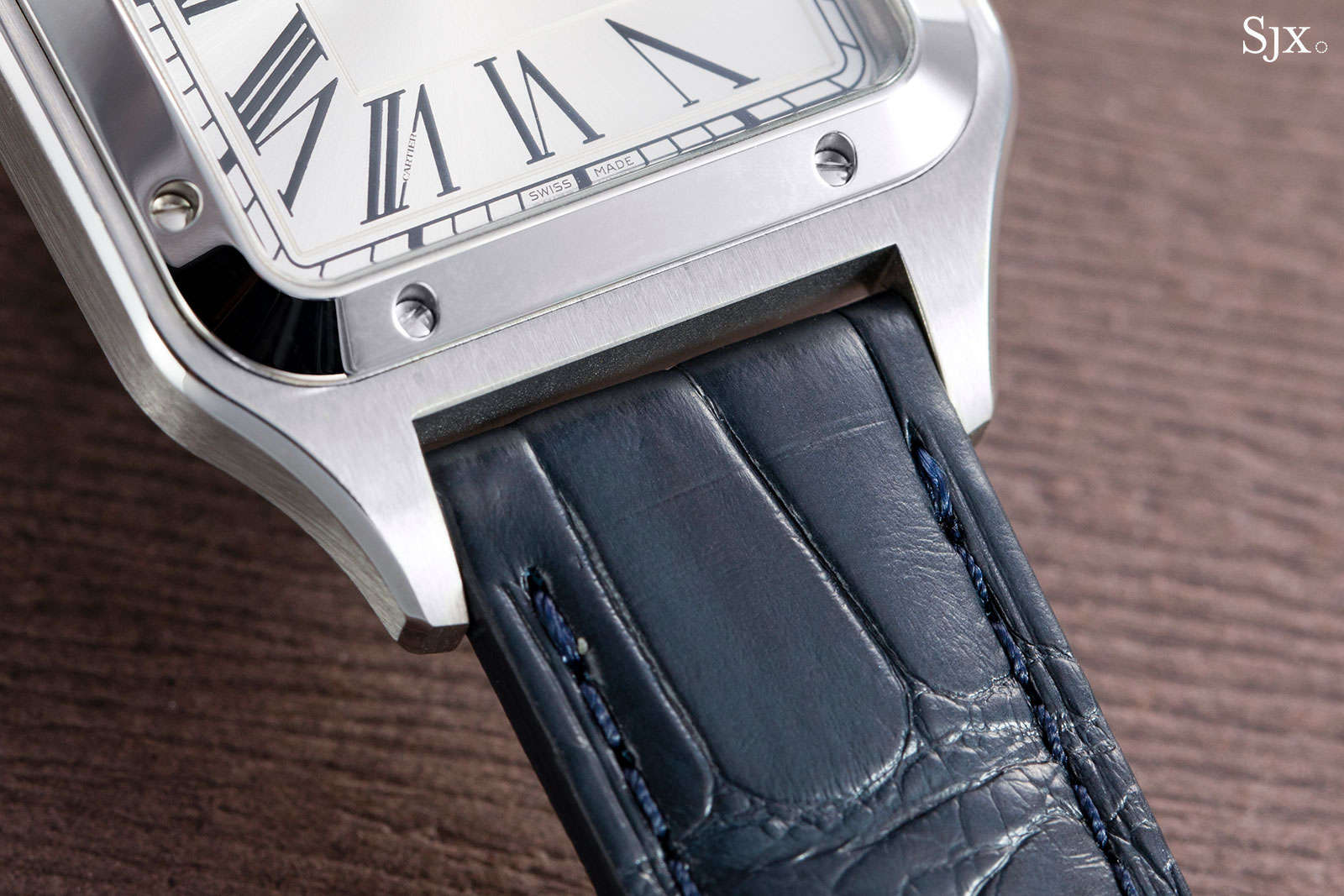
The quartz model with a standard strap and a gap between case and strap
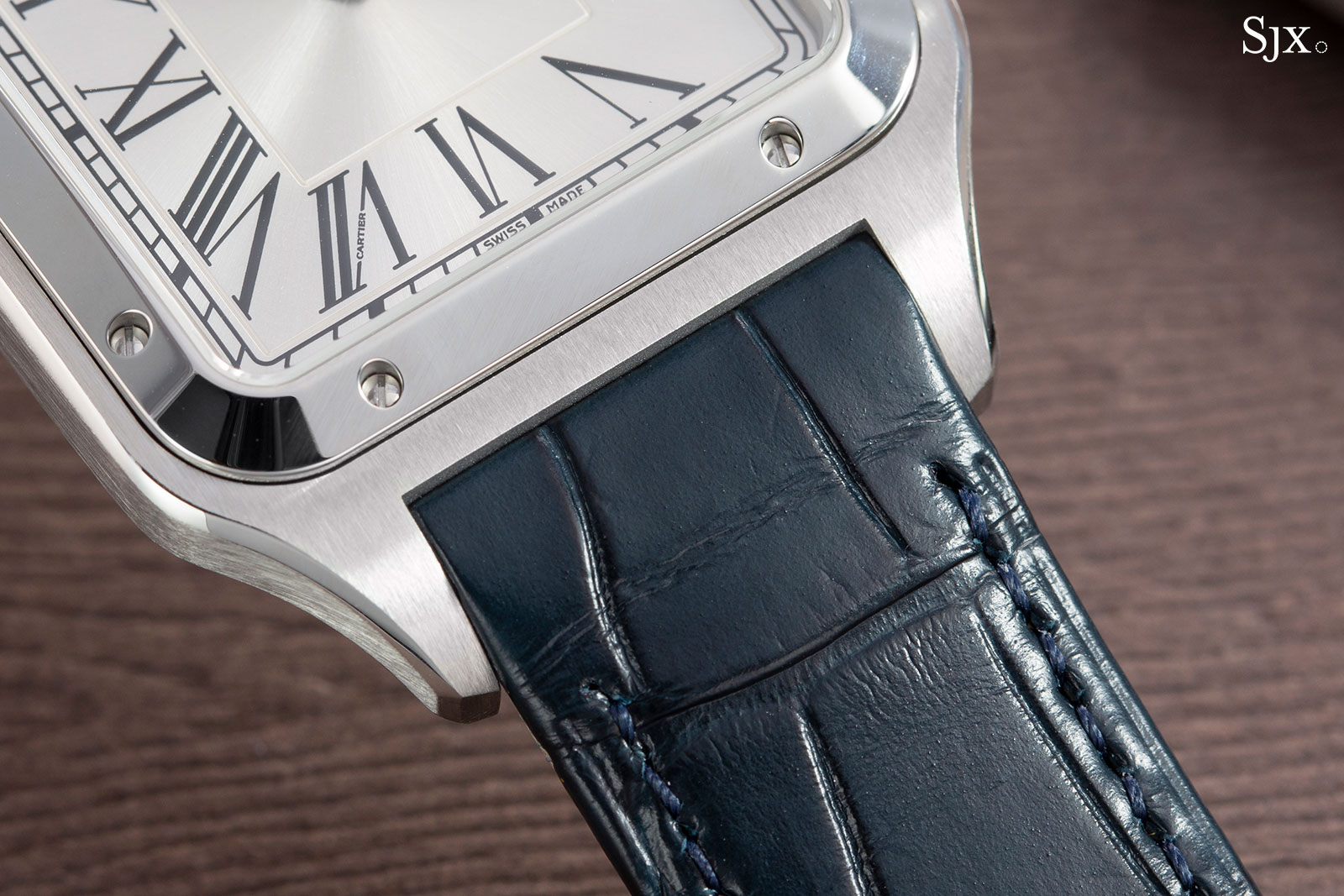
The XL with its integrated strap
Concluding thoughts
The Santos-Dumont XL is a compelling, well-priced watch that reimagines an iconic design without changing too much, but instead refines the details while keeping an eye on affordability.
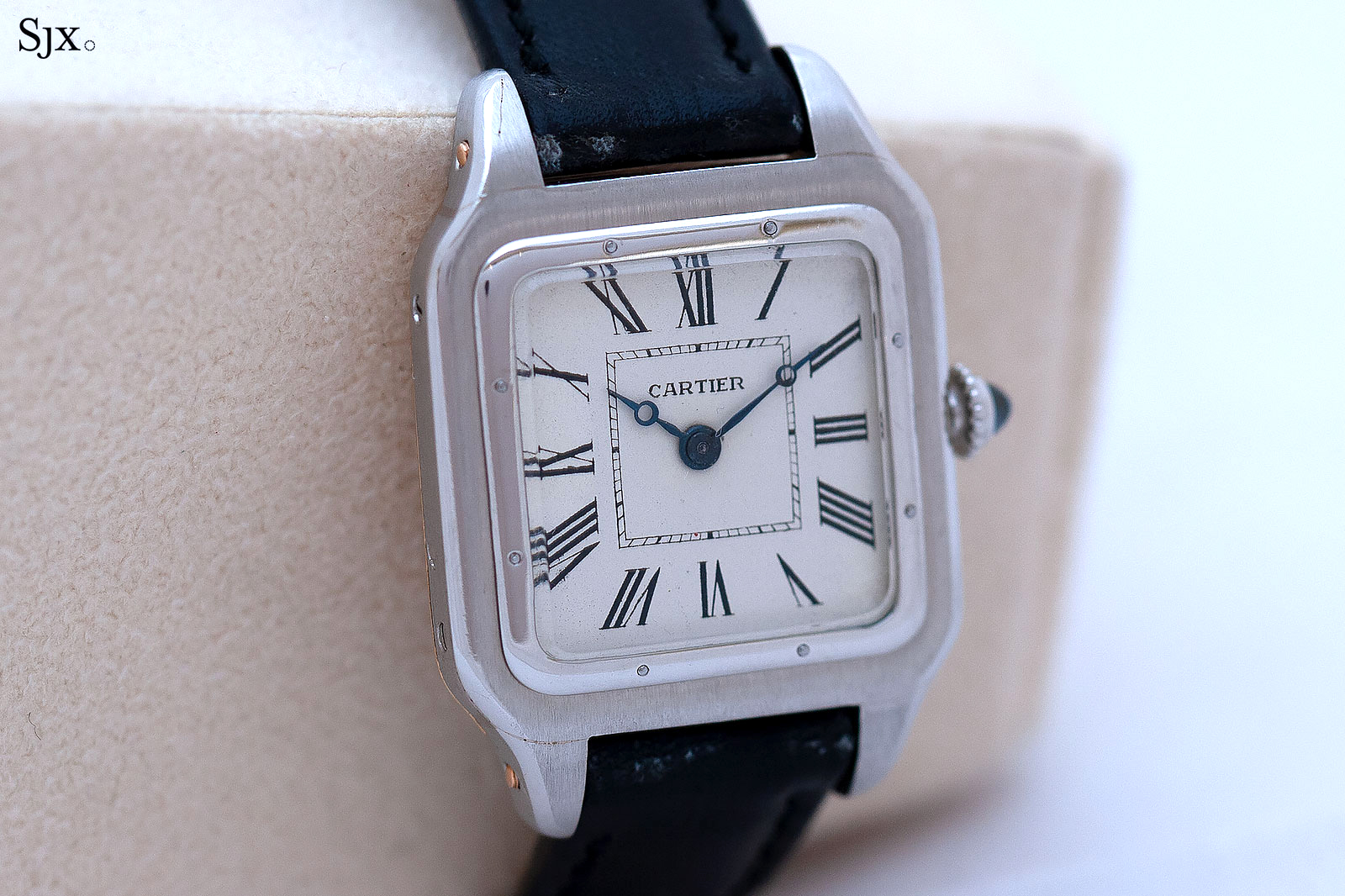
An original in platinum with a gold case back from the 1920s
It difficult to praise a luxury watch as sensible, but the Santos-Dumont XL tries to be, being the first Santos-Dumont to be available in steel. As such, the base model in steel is an accessible €4,700, or about US$7,000.
The steel model is good value, and the 18k gold version is fair value for a gold watch. The two-tone model, less so given the price premium demanded for a little bit of gold, but that is typical across the industry for steel-and-gold watches.
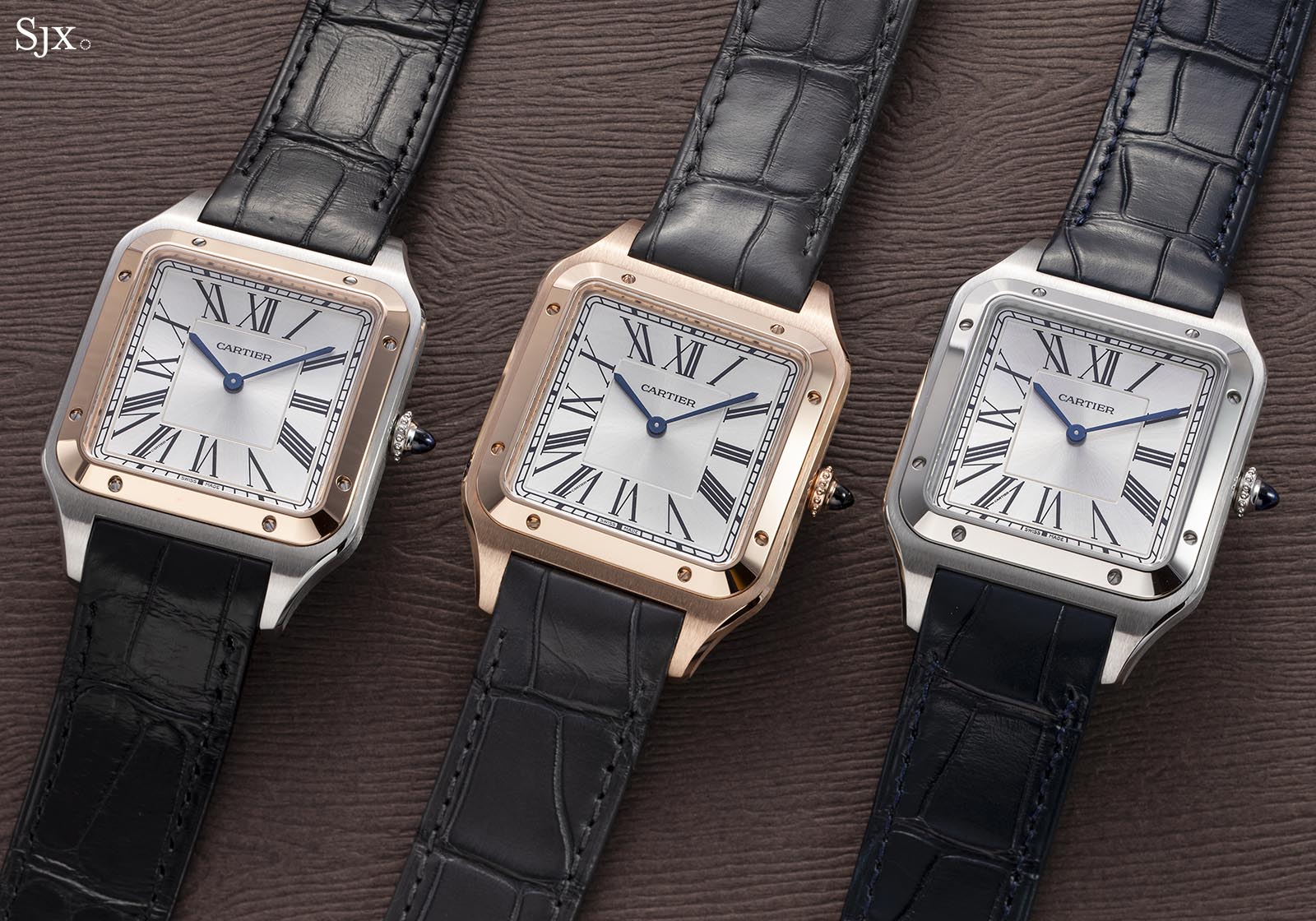
The Santos-Dumont XL in two-tone steel and gold, pink gold, and all-steel
Key facts and price
Cartier Santos Dumont XL
Ref. CRWSSA0032 (steel)
Ref. CRW2SA0017 (steel and gold)
Ref. CRWGSA0032 (pink gold)
Diameter: 46.6 mm by 33.9 mm
Height: 7.5 mm
Material: Stainless steel; steel and pink gold; pink gold
Water resistance: 30 m
Movement: 430 MC
Functions: Hours, minutes, seconds
Frequency: 21,600 beats per hour (3 Hz)
Winding: Hand-wound
Power reserve: 38 hours
Strap: Alligator with pin buckle
Limited edition: No
Availability: In boutiques and retailers from May onwards
Price: €4,700, or 8,100 Singapore dollars (steel)
€6,500, or 11,200 Singapore dollars (steel and gold)
€12,500, or 21,500 Singapore dollars (pink gold)
For more information, visit Cartier.com.
Back to top.








